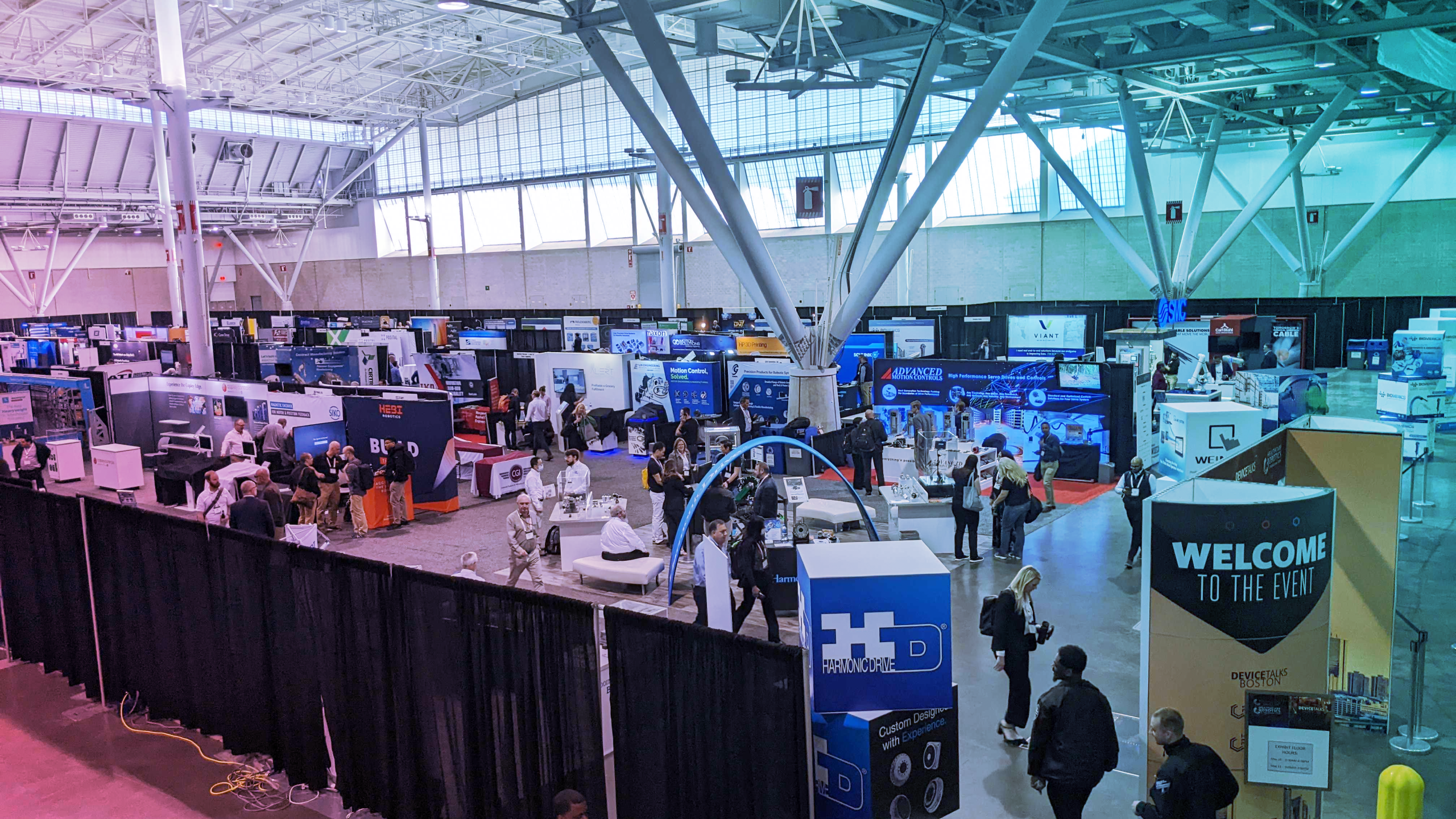by Shaun Juncal – reposted from Formant
Couldn’t make it to RSE 2022, or looking for a quick recap to refresh your memory? Our team wrapped up the key takeaways from this week’s conference to help you bring insights back to your team. We’ll include links to slides and session recordings as soon as they are available.
1. Interoperability is top of mind for (almost) everyone
Brian Gerkey kicked off the event Tuesday morning to discuss interoperability and Open-RMF, Open Robotics’ open source fleet manager designed to connect multiple fleets together. As Brian pointed out, “Everyone thinks their robots are special snowflakes. In reality, they are very similar.” Open-RMF includes abstractions of maps, AMR fleets, infrastructure (doors, elevators), traffic schedule and task management.
Session Title: Robotics Needs a Babelfish: The Skinny on Robot Interoperability
Speaker: Brian Gerkey, CEO at Open Robotics
2. RaaS companies need to focus on customer ROI
In this session, Tom and Reese shared their experiences founding and growing IAM Robotics and American Robotics. Reese dug into the fact that building a robotics company is really like building 3+ different companies; you need to figure out hardware, autonomy, data, and more. He also talked about the “build, buy, or ally” decision most founders need to make when building their tech stack, with a word of warning: don’t assume there is a commercial-grade product that you can buy or ally with for every part of your stack.
Tom focused on the importance of understanding the economics of your robotics business, and that at the end of the day robotics companies are essentially “selling coupons” (i.e. promising customers their robotics solution will save them X amount of money.
Session Title: Different Paths to Successful Commercialization: A Discussion of Three Roads Taken
Speakers:
Tom Galluzzo, CTO at IAM Robotics
Reese Mozer, CEO at American Robotics
3. Data is crucial, both for internal and external use
Brad Bogolea, CEO at Simbe, shared his insight in growing Simbe to having hundreds of devices deployed across 3 continents. Simbe’s flagship product is Tally, a shelf-scanning robot that helps solve the challenge of missing/misplaced items at retail locations.
At the end of the day, Simbe’s product is essentially the image data that Tally collects, which is provided to customers. How this data is collected, analyzed and presented to customers is crucial. In Simbe’s efforts to streamline operations, Brad shared that the company tries to “instrument everything” on the engineering side.
Session Title: Creating a Better Mobile Robot for Consumer Environments
Speaker: Brad Bogolea, CEO at Simbe Robotics
4. We have a long way to go in optimizing robot-human interactions
Melonee Wise, VP of Robotics Automation at Zebra Technologies (and previously founder and CEO at Fetch Robotics) took us on a deep dive into how her team is utilizing data and machine learning to optimize performance of AMRs, particularly in the field of navigation.
She recounted her team’s process of modeling hundreds of scenarios, and consistently found that robots don’t always behave how you expect. Using these findings, they rounded off the sharp edges of robot-human interactions, such as ensuring that a robot defaults to moving to the right when moving directly at a human. Through pulling tons of simple lidar data off devices, her team was able to introduce behavioral changes that produced significant improvements in fleet performance.
Session Title: Why the Cloud Is a Force Multiplier for Robotics
Speaker: Melonee Wise, VP Robotics Automation, Zebra Technologies
5. Robotics needs to deliver on the promise of “better job” creation
In one of Wednesday’s keynotes, Greg Smith, President of Industrial Automation Group at Teradyne, tackled one of the hottest topics in robotics: cobots.
In the US, manufacturing makes up 8% of the workforce and 11% of gross domestic product (GDP). The introduction of cobots and other industrial automation are an opportunity to create new job opportunities, but we need to define what those roles are and work to train people for them. To be successful in job creation alongside cobotics, humans need to be prepared for a future where machines play a larger part in the workforce than ever before.
Greg gave a couple of great examples of re-skilling programs: eKAMI and UR Academy.
Session Title: Collaborative Robotics – Resolving the Manufacturing Labor Crisis, Creating New Opportunities
Speaker: Greg Smith, President, Industrial Automation Group at Teradyne
by Shaun Juncal – reposted from Formant

